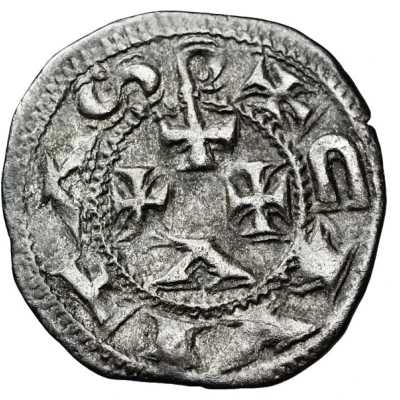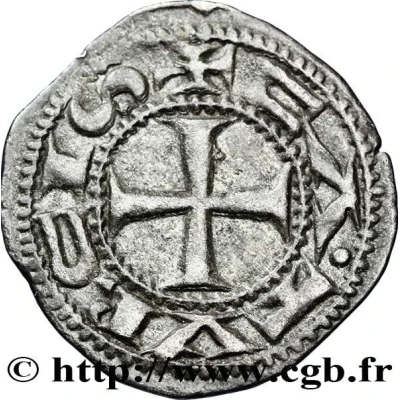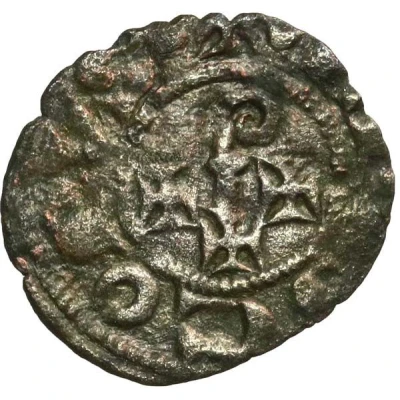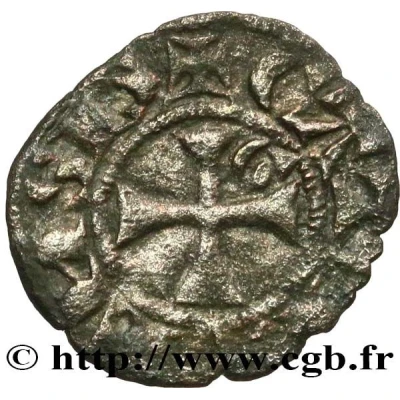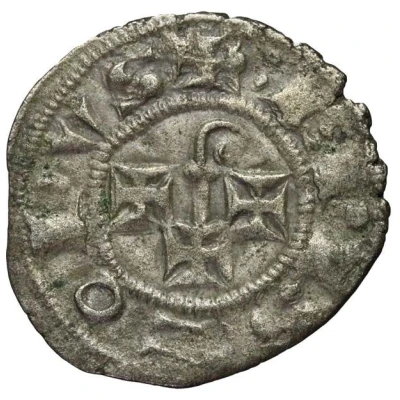
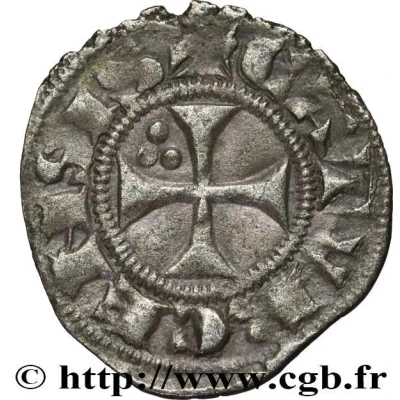

© CGB
Obol anonymous with crozier three pellets ND
| Billon (.220 silver) | 0.49 g | 15 mm |
| Issuer | Cahors, Bishopric and City of (French States) |
|---|---|
| Type | Standard circulation coin |
| Years | 1275-1325 |
| Value | 1 Obol (1⁄480) |
| Currency | Denier |
| Composition | Billon (.220 silver) |
| Weight | 0.49 g |
| Diameter | 15 mm |
| Shape | Round (irregular) |
| Technique | Hammered |
| Orientation | Variable alignment ↺ |
| Demonetized | Yes |
| Updated | 2024-10-04 |
| Numista | N#335031 |
|---|---|
| Rarity index | 97% |
Reverse
Cross with three pellets in first quarter.
Script: Latin
Lettering: ✠ CATVRCENSIS
Unabridged legend: Caturcensis
Translation: [Obol] of Cahors.
Comment
From 1224 onwards, the bishopric and the city seem to have shared the rights to the mint, although the bishopric was the sole holder of the right to manufacture, as recalled in several deeds, including that of 1267. In February 1249, the consuls obtained from bishop Géraud IV de Barsac (1237-1250) the stabilization of the Cahors mint. In June 1281, a ruling by the Parliament of Cahors put an end to the manufacture of the consuls' civic coinage. The bishops continued to sign their coins with Raymond de Cornil (1280-1293) and Hugues Géraud (1311-1316). The Cahors coin is mentioned in penultimate position in the ordinance of 1315, which required 20 caorcins to make 12 deniers tournois. It remained the currency of account until the 15th century.Interesting fact
One interesting fact about this coin is that it was made of Billon, which is an alloy of silver and other metals, typically copper or bronze. The use of Billon in coinage was common in medieval Europe, as it allowed for the production of coins with a silver content that was lower than the pure silver coins that were also in circulation. This helped to stretch the supply of silver, which was a valuable and scarce resource at the time. Despite being made of a base metal alloy, the Obol coin still held significant value and was widely used in trade and commerce.
